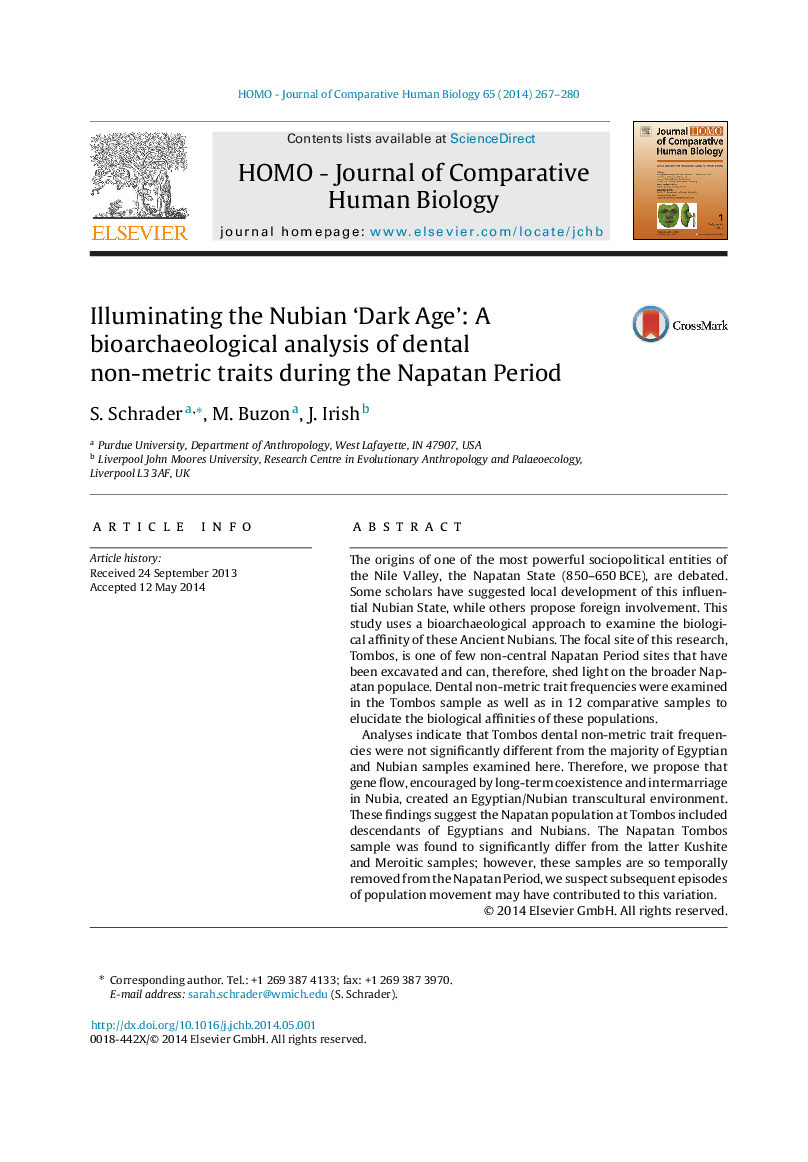| Article ID | Journal | Published Year | Pages | File Type |
|---|---|---|---|---|
| 100224 | HOMO - Journal of Comparative Human Biology | 2014 | 14 Pages |
The origins of one of the most powerful sociopolitical entities of the Nile Valley, the Napatan State (850–650 BCE), are debated. Some scholars have suggested local development of this influential Nubian State, while others propose foreign involvement. This study uses a bioarchaeological approach to examine the biological affinity of these Ancient Nubians. The focal site of this research, Tombos, is one of few non-central Napatan Period sites that have been excavated and can, therefore, shed light on the broader Napatan populace. Dental non-metric trait frequencies were examined in the Tombos sample as well as in 12 comparative samples to elucidate the biological affinities of these populations.Analyses indicate that Tombos dental non-metric trait frequencies were not significantly different from the majority of Egyptian and Nubian samples examined here. Therefore, we propose that gene flow, encouraged by long-term coexistence and intermarriage in Nubia, created an Egyptian/Nubian transcultural environment. These findings suggest the Napatan population at Tombos included descendants of Egyptians and Nubians. The Napatan Tombos sample was found to significantly differ from the latter Kushite and Meroitic samples; however, these samples are so temporally removed from the Napatan Period, we suspect subsequent episodes of population movement may have contributed to this variation.
